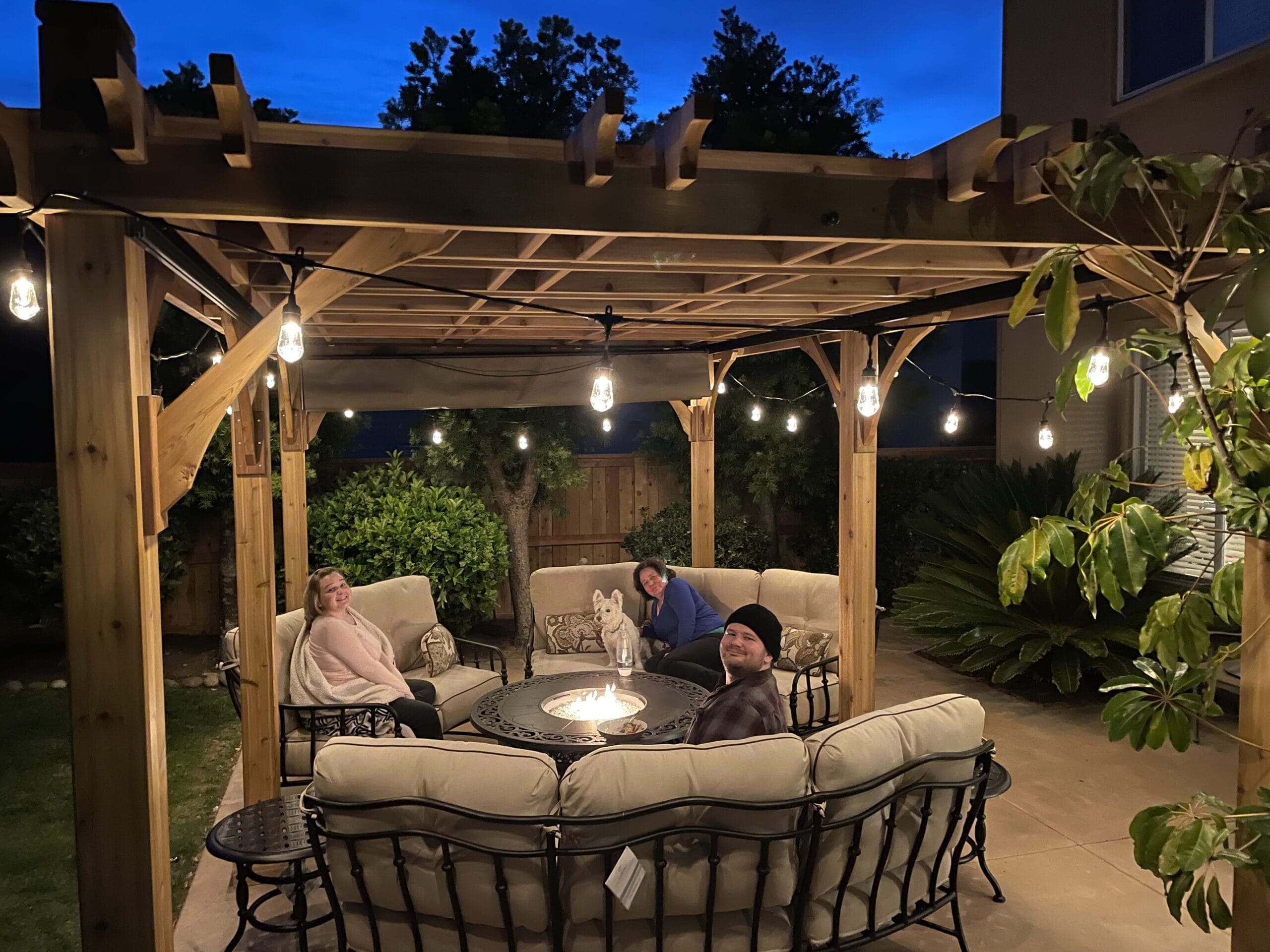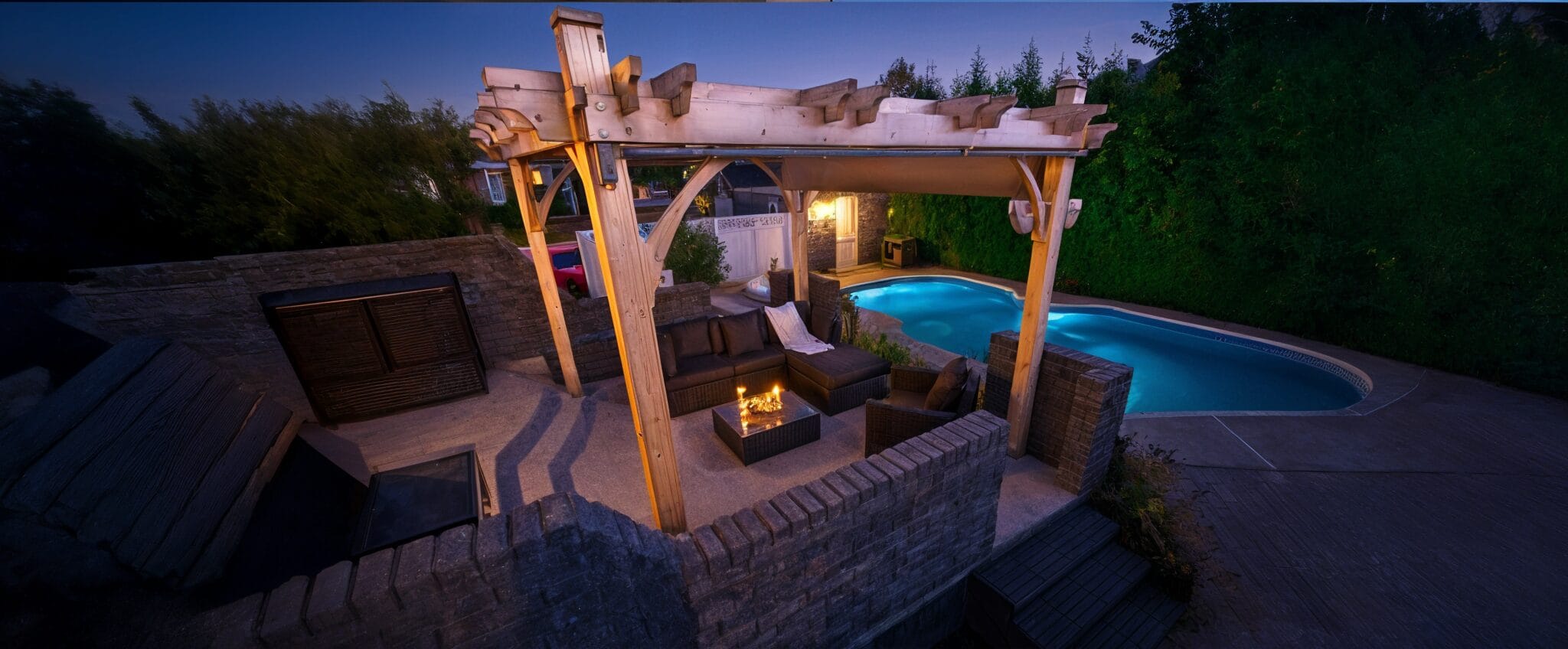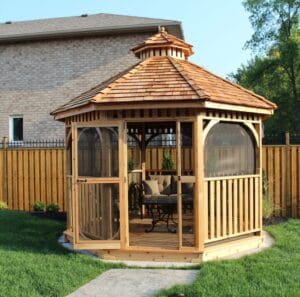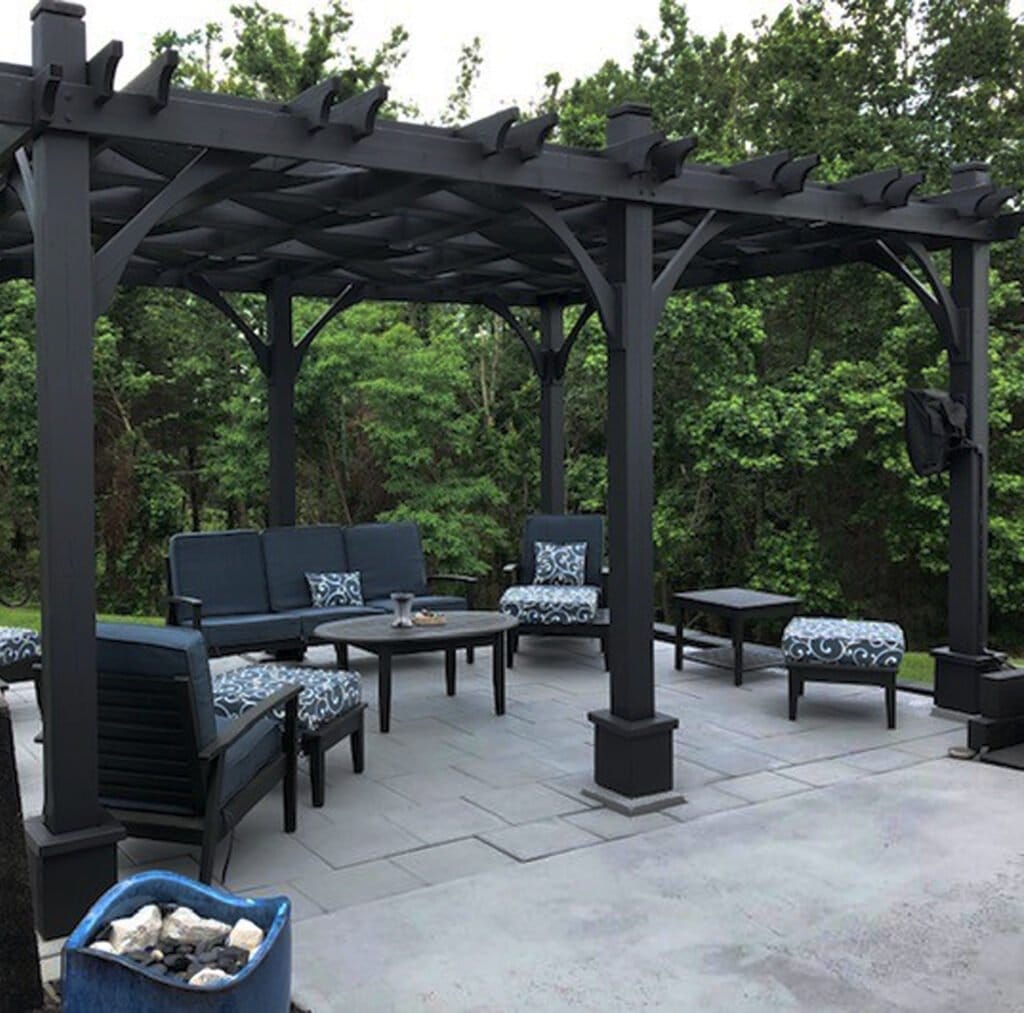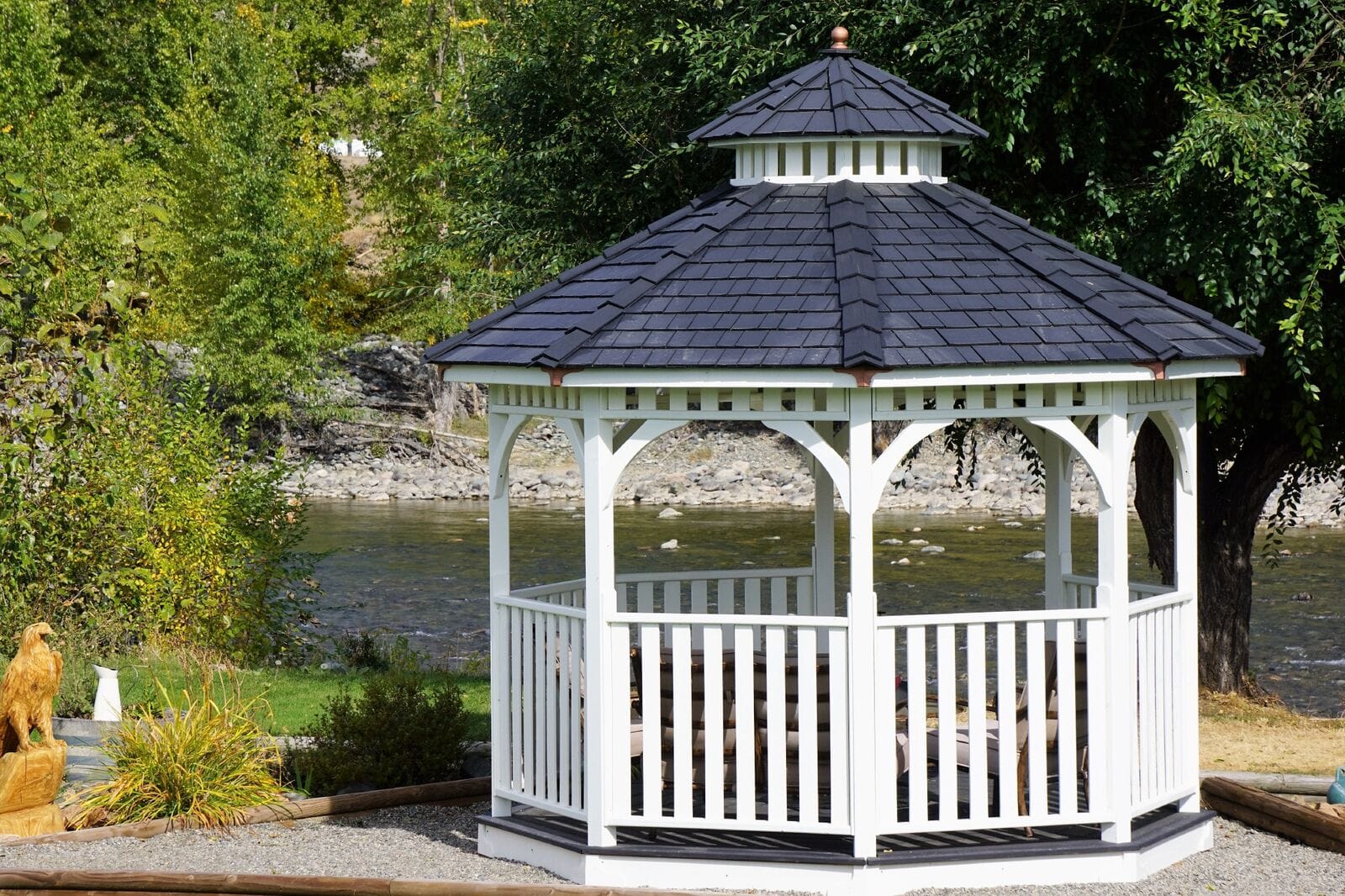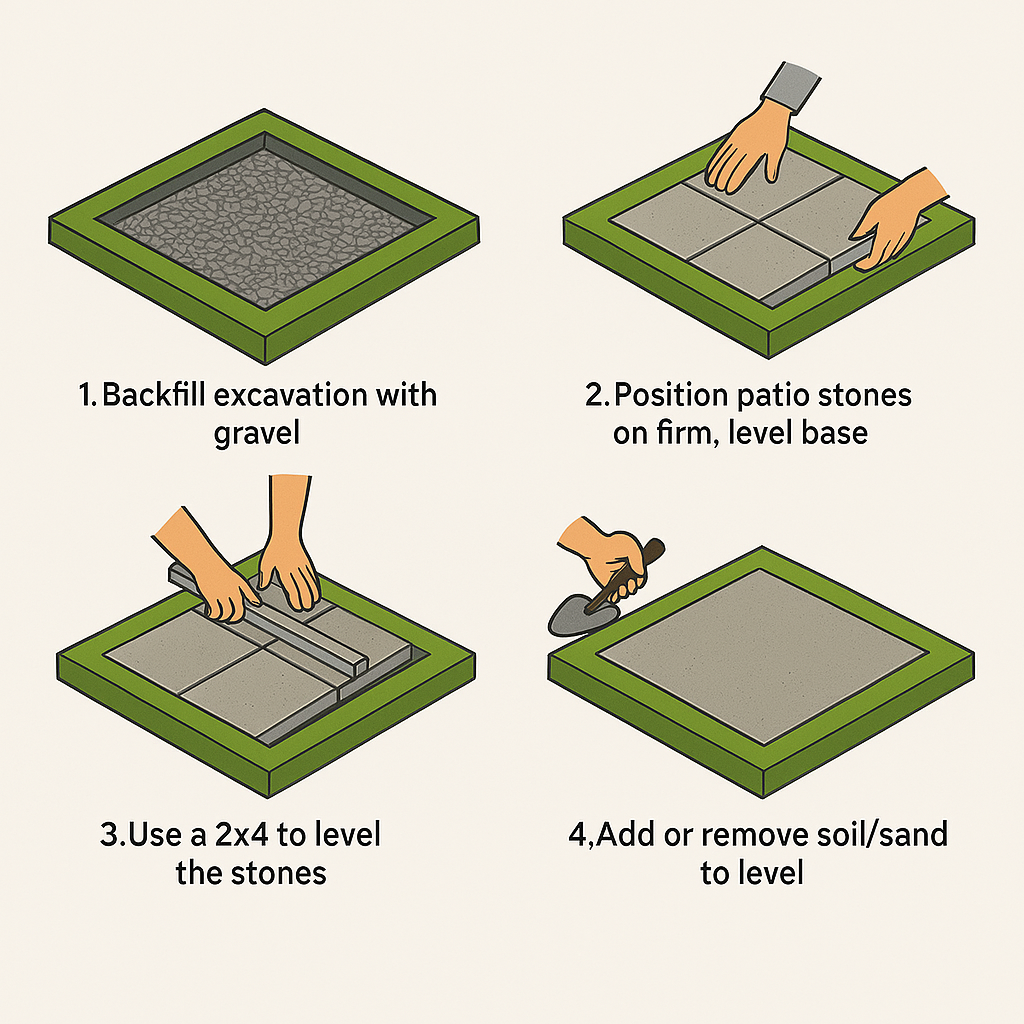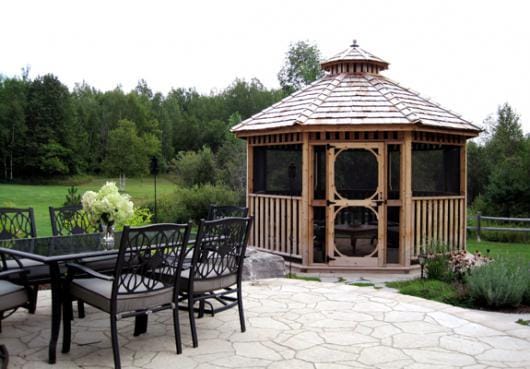Transform Your Outdoor Living Space with a Cedar Gazebo
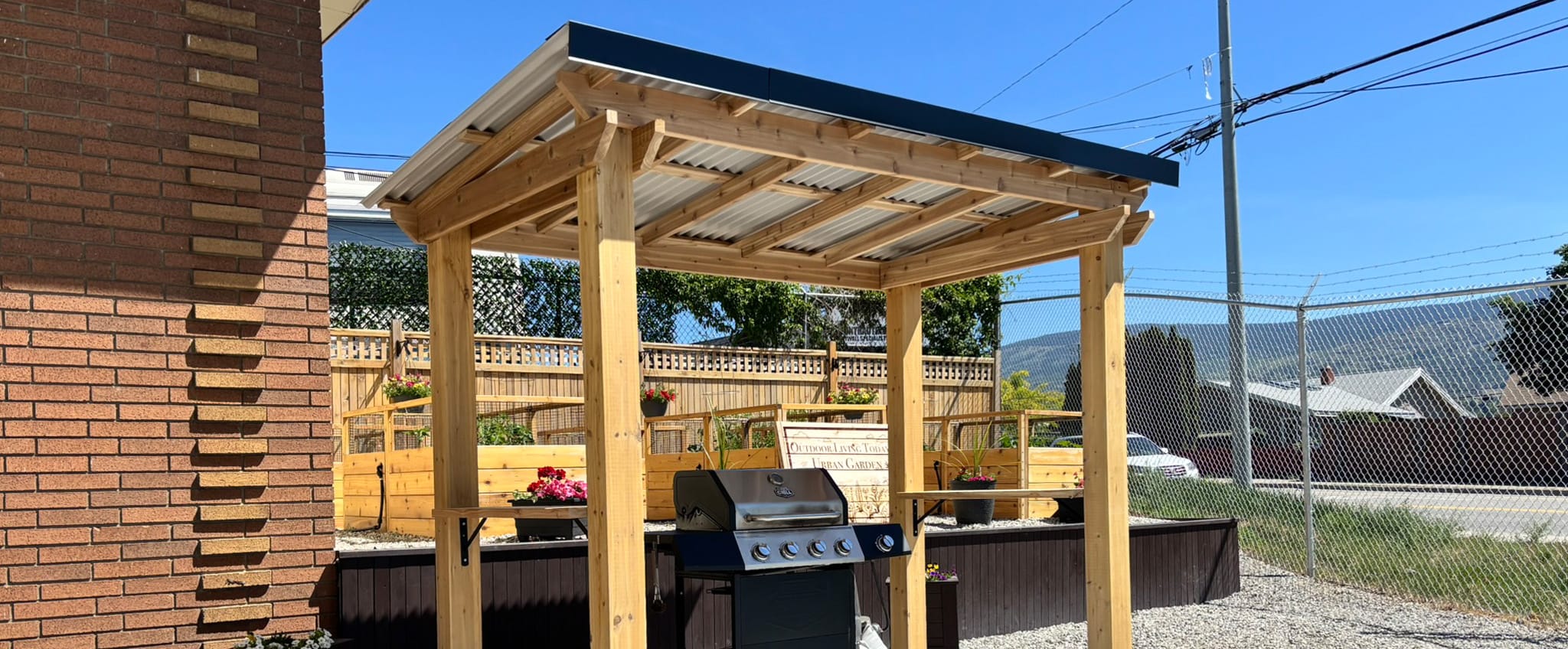
Looking to enhance your outdoor space and add usable square footage to your home? A cedar gazebo is a beautiful and functional way to upgrade your backyard. Whether you’re entertaining guests, relaxing solo, or creating a year-round retreat, gazebos offer endless possibilities.
What Is a Gazebo?
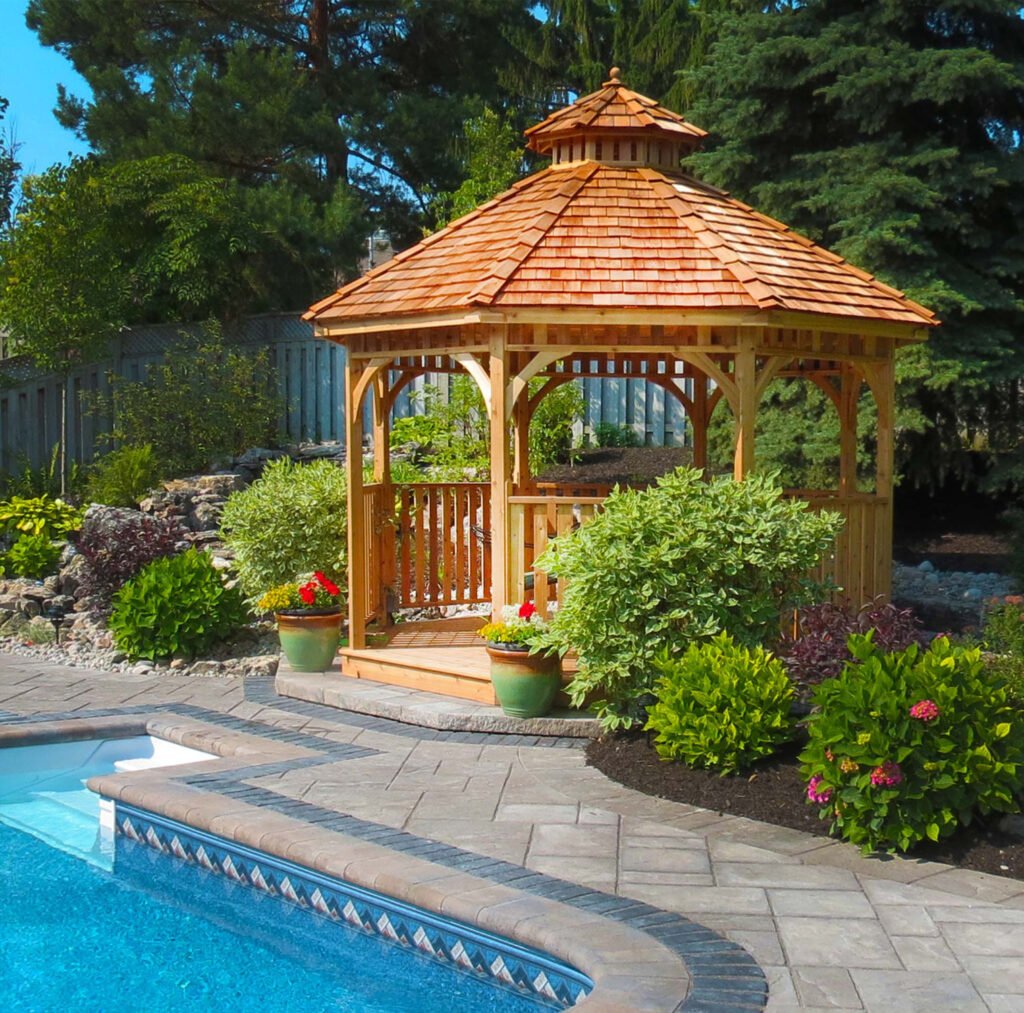
A gazebo is a freestanding outdoor structure with a roof and open sides, typically built in a garden or backyard. Common gazebo shapes include octagonal, hexagonal, rectangular, and square. Some gazebos have half-walls or screens between the support posts, while others are fully enclosed and built for all-season use.
Western Red Cedar gazebos are particularly popular due to their natural resistance to rot, insects, and decay, making them ideal for outdoor use in various climates.
4 Creative Ways to Use Your Backyard Gazebo
1. Outdoor Relaxation Retreat
Create a cozy outdoor nook by adding lounge chairs, cushions, and a small table. Use your cedar gazebo as a private escape to enjoy a good book, sip iced tea, or just unwind in nature.
2. Backyard Entertaining Hub
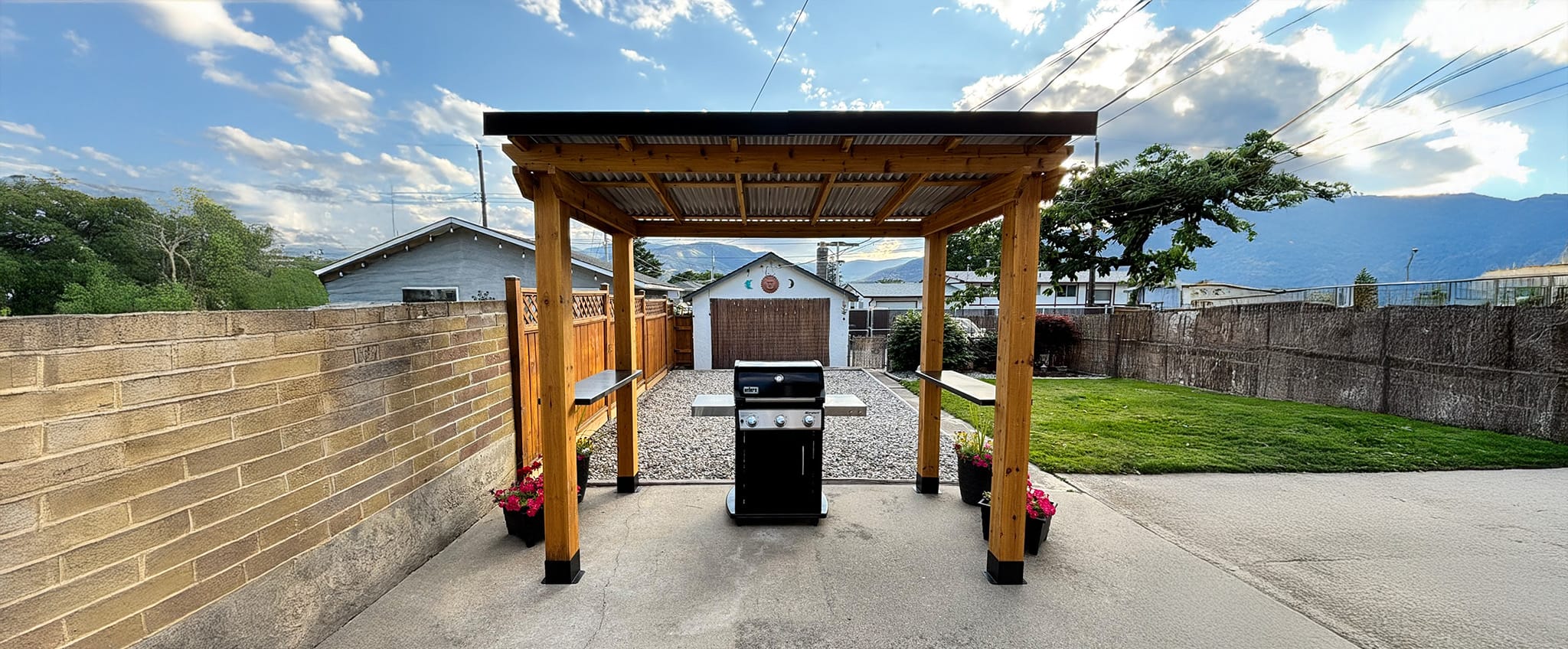
Host BBQs, birthday parties, or summer dinners under the shade of your gazebo. Add string lights or lanterns for ambiance. Gazebos near pools make perfect shaded lounging spots to keep an eye on kids while chatting with guests.
3. Fitness & Wellness Zone
Practice yoga, stretch, or meditate in your gazebo. Surrounded by greenery and away from indoor distractions, it becomes an ideal space for mental and physical well-being.
4. Hot Tub Enclosure
Install a gazebo around your hot tub to provide year-round privacy and protection from the elements. A cedar structure enhances the spa experience while blending seamlessly into the landscape.
Why Choose a Cedar Gazebo?
When shopping for a gazebo, material matters. Western Red Cedar is one of the most popular choices thanks to its:
Durability: Naturally resists rot and decay
Pest resistance: Cedar’s aroma deters insects
Aesthetic appeal: Warm tones and beautiful grain patterns
Workability: Lightweight and easy to assemble
Cedar also gives your backyard a timeless, upscale look that integrates beautifully into natural surroundings.
How to Get a Cedar Gazebo for Your Yard

You have a few options for adding a gazebo to your property:
1. DIY Build from Scratch
Purchase raw lumber and design your own gazebo. This option requires carpentry experience, planning, and access to tools.
2. Hire a Professional
Work with a contractor to custom-build your gazebo. This offers more flexibility in design but comes with a higher cost.
3. Purchase a Gazebo Kit
The easiest and most popular option for homeowners is buying a pre-cut or panelized gazebo kit. Outdoor Living Today offers high-quality Western Red Cedar gazebo kits that come with all the required hardware, instructions, and pre-cut pieces.
Gazebo kits allow for faster assembly and fewer design headaches, and they come in a variety of sizes and styles to suit your space and lifestyle.
Expand Your Outdoor Living Today
Adding a gazebo to your backyard isn’t just about aesthetics—it’s about lifestyle. It provides a beautiful, functional space to enjoy nature, host guests, or simply relax. Whether you’re investing in a hot tub enclosure or creating your personal garden retreat, a cedar gazebo kit makes the process simple, stylish, and satisfying.
Explore Western Red Cedar gazebo kits at OutdoorLivingToday.com and transform your yard into the outdoor oasis you deserve.

